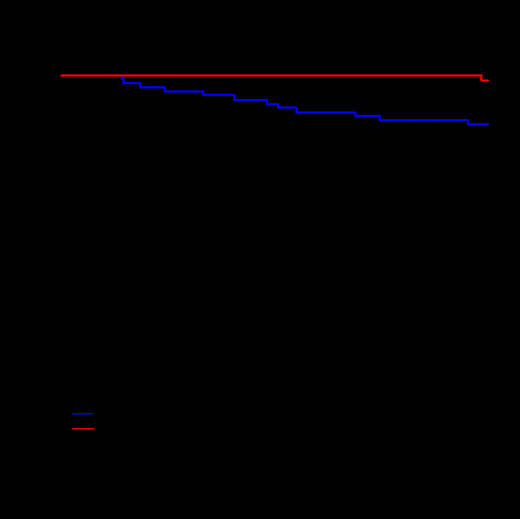Allogeneic hematopoietic stem cell transplant (HCT) patients are at risk for having a low Vitamin D (VD) level. VD level has been correlated with cancer incidence, pulmonary disease and infection. VD also has immunomodulatory properties and reports suggest that a low VD level increases the incidence of chronic GVHD and may impact mortality in HCT. HCT morbidity and mortality is attributed to infection, organ system toxicity, GVHD and recurrent disease. Identifying a correctable factor that would reduce the occurrence or severity of these complications would be beneficial. It is possible that VD may have significant effect on outcome after HCT due to its described properties. Normal VD level may infer better outcome for HCT patients by improving response in or preventing infection, protecting organ function, decreasing risk of relapse and/or decrease incidence or severity of GVHD. We hypothesize that there is a relationship between VD level and morbidity and mortality after HCT. We therefore studied VD levels pre- and post-HCT to determine if there was an impact of VD level on these outcomes.
Two hundred and fifty patients underwent myeloblative or non-myeloablative HCT between 3/12/2009 and 10/29/2012 at our institution. Baseline demographic data, disease characteristics, transplant variables and outcomes data were obtained from the transplant database. These data were supplemented by retrospective chart review for VD levels prior to transplant, at day 100 and 1 year post-HCT. Data were collected through day 100 for occurrence of infection and admissions to the ICU. Categories for VD level included normal (≥30 ng/ml) or abnormal (<30 ng/ml). Patient characteristics were compared using the Chi-square test or Wilcoxon rank sum test. The logrank test was used to compare the survival curves between groups, and the Cox proportional hazard model was used to measure the association between outcomes (mortality, relapse, acute or chronic GVHD) and VD level.
Of the 250 patients undergoing HCT VD level was performed on 180 (72%) patients pre-HCT, 149 (60%) patients at day 100 post-HCT and 81 (32%) patients at 1 year post-HCT. The rate of acute or chronic GVHD was not significantly associated with VD level pre or post-HCT. Overall infection risk was not significant pre or post-HCT but when sorted by type of infection bacterial infection (p=0.01), radiologic evidence of pulmonary nodules/consolidation (p=0.03), and ICU admissions (p=0.0313) within the first 100 days post-transplant were significantly increased in patients who had a low VD level at day 100 post -HCT. Pre-HCT and 1 year post-HCT VD level did not impact mortality or relapse but there was a significant increase in one year mortality (p=0.02, HR = 5.99) and relapse (p = 0.03, HR=9.47) in patients who had a low VD level at day 100 post-HCT.
Mortality at 1 Year by Day 100 Post-HCT by VD Level
Relapse at 1 Year by day 100 Post-HCT VD Level
Bacterial Infection, Lung Infection and ICU Admissions by Day 100 Post-HCT VD Level
Bacterial Infection, Lung Infection and ICU Admissions by Day 100 Post-HCT VD Level
This study shows that VD may play a significant role in bacterial infection, pulmonary infection, ICU admission, mortality and relapse after HCT. Those patients with a low VD level at day 100 post-HCT had significantly worse outcomes for relapse and mortality. Those patients with a low VD level at day 100 post-HCT had a higher incidence of lung infection, bacterial infection and admission to the ICU. In contrast to previous studies, we found no correlation between VD level and incidence of acute or chronic GVHD. This study is one of the largest reported and the first to our knowledge that reports decreased risk of certain types of infection (bacterial and lung), mortality and relapse in those with an adequate VD level receiving HCT. It is possible that supplementation of VD to keep levels ≥30 would reduce these complications of HCT. Future prospective study of VD is warranted. Finding a low cost and easy to administer therapy (such as VD replacement) that would reduce morbidity, mortality and relapse in the HCT population is needed.
Reeder:Celgene: Research Funding; Novartis: Research Funding; Millenium: Research Funding.




This feature is available to Subscribers Only
Sign In or Create an Account Close Modal